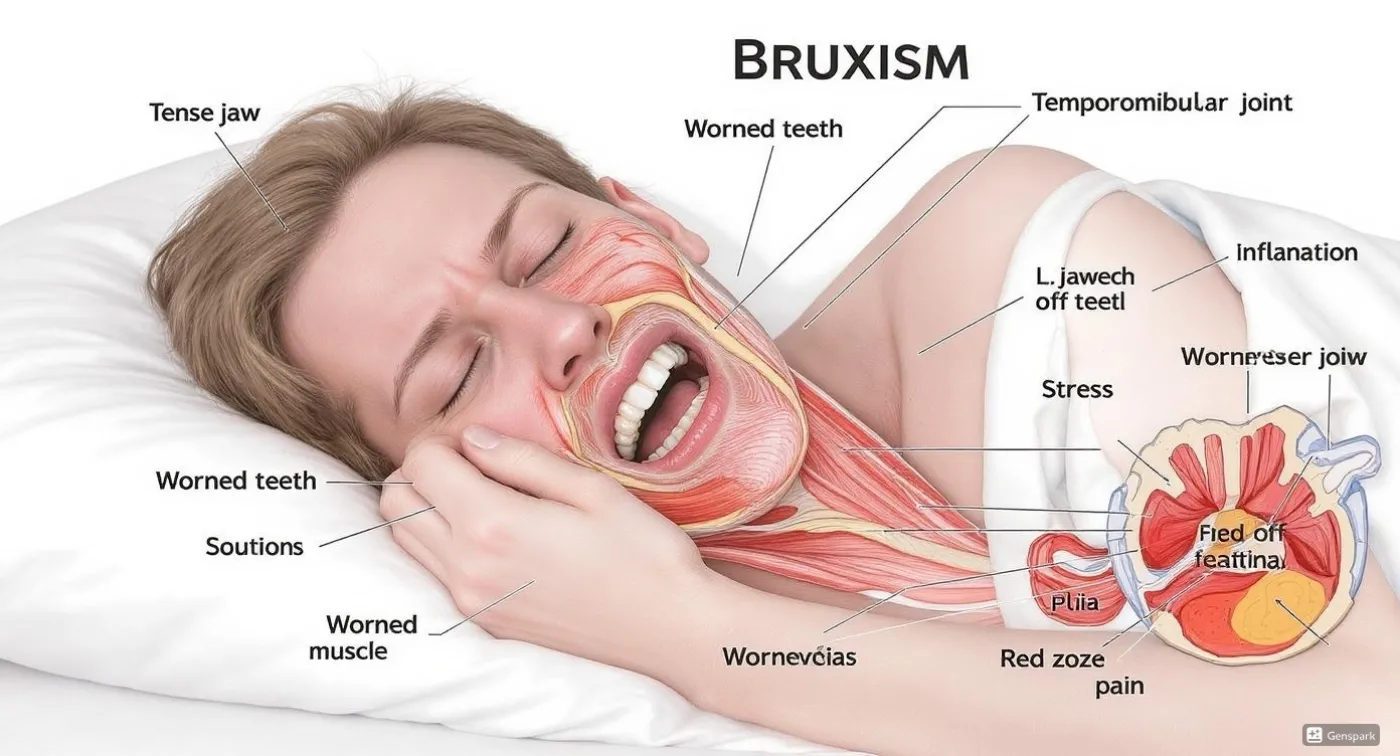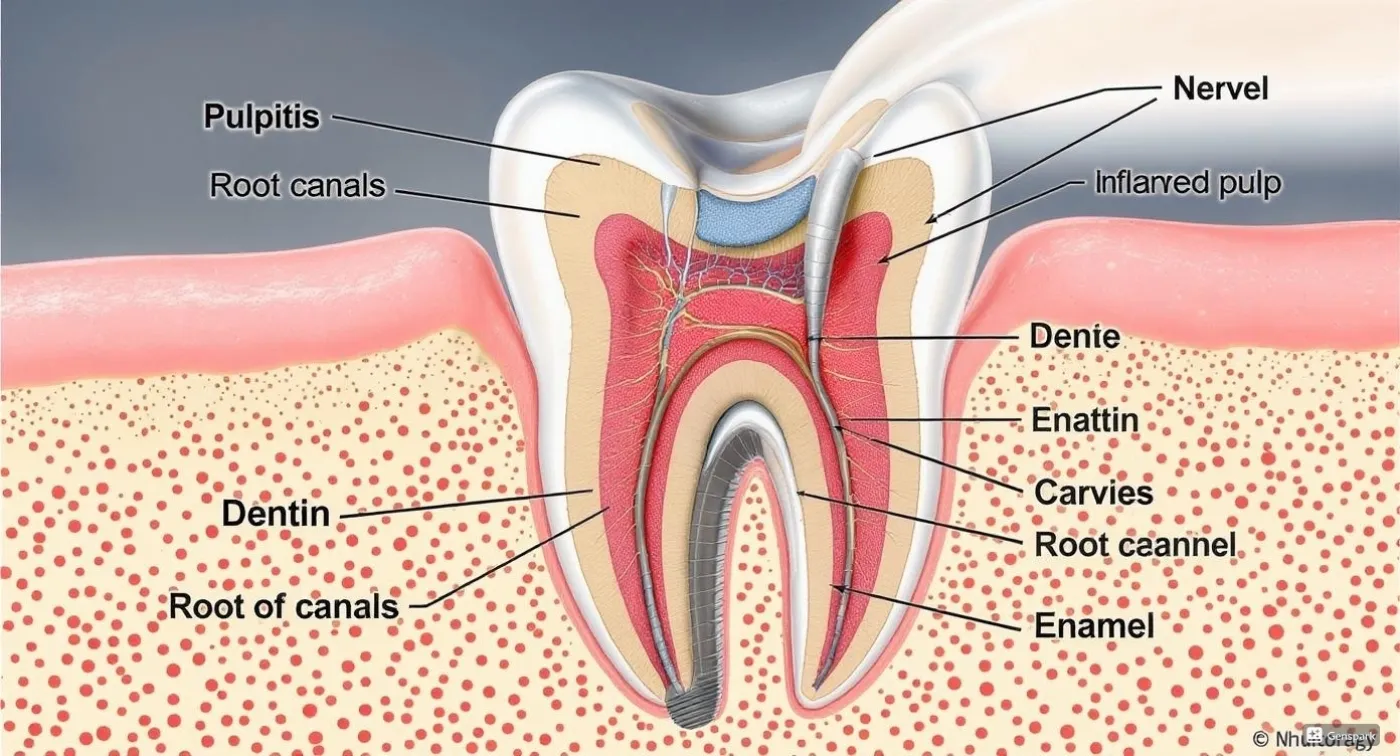With age, teeth undergo changes: enamel wears down, the pulp shrinks, and gums become more vulnerable. To keep them healthy after 40, it’s important to brush regularly, use dental floss, choose fluoride toothpaste, and visit the dentist every six months. A healthy diet and avoiding harmful habits like smoking also play a key role.

How to Maintain Healthy Teeth After 40: Features of Age-Related Changes
The tooth has a complex anatomical structure that includes three main parts: the crown, the neck, and the root. The visible part consists of strong tissues: enamel, dentin, and cementum, which surround the pulp and protect it from external influences. The pulp fills the inner space of the tooth from the crown to the root and contains a large number of blood vessels and nerve endings, providing nourishment to all tooth tissues. With age, all these structures undergo changes, indicating the gradual aging of the tooth as a whole. Poor dental health is always a consequence of physical impact, certain dietary habits, and lifestyle. In this article, we will discuss the main age-related changes and dental problems after 40, as well as the key causes of this process.
Main age-related changes in teeth
With age, teeth gradually undergo changes, primarily in the enamel and dentin. The enamel begins to wear down, leading to a reduction in tooth height by approximately 0.035 mm per year. In some people, these processes occur faster due to individual anatomical features or the influence of harmful habits. Changes also affect the color and structure of the enamel: it becomes dull, darkens under the influence of dietary pigments, and microcracks appear, which make it easier for plaque to penetrate. Over time, plaque can turn into hard deposits that impede the delivery of beneficial substances to the tooth tissues. It is important to remember that enamel cannot regenerate, so any damage should be treated at early stages with the help of a specialist.
Age-related changes also affect dentin - the inner layer of the tooth. During aging, cell renewal slows down, and the quality of newly formed tissue decreases.
What happens to the dental pulp
With age, the pulp (the soft inner part of the tooth) decreases in volume, and its tissues undergo fibrotic changes. The accumulation of mineral deposits worsens the condition of the blood vessels that nourish the tooth. Many older adults develop atherosclerosis of the pulp vessels, which affects the tissues' ability to resist external irritants.
How gums and jawbone change
Why do adults lose teeth? This is a common question among dental patients. It is important to understand that with age, the density and height of the bone tissue decrease. This process leads to the development of jaw osteoporosis. Improperly fitted or placed dentures can also cause uneven chewing pressure, negatively affecting the jawbone’s condition.
Soft tissues in the oral cavity also undergo changes. Gum recession — the process of gums shrinking and exposing the tooth neck — can result from previous diseases, hereditary factors, or harmful habits. Smoking, in particular, worsens gum health. Without timely intervention, this may lead to tooth loosening and loss.
Main dental and gum problems after 40 years
After the age of 40, many people begin to face three main groups of dental problems.
The first is tooth decay, which can be complicated by pulpitis, periodontitis, and other inflammatory processes. Proper oral hygiene at home and regular preventive dental check-ups, including professional cleaning twice a year, can help prevent this.
The second group is related to enamel wear that occurs with age. Teeth gradually lose their shape and height, become yellower and more sensitive — all due to thinning of the enamel layer, which no longer protects as effectively against temperature and chemical irritants.
The third group of problems arises due to changes in the soft tissues of the oral cavity. With age, the gums recede, exposing the necks of the teeth. This causes sensitivity during eating, brushing, or even to light touch.
Tooth wear can be of two types: physiological and pathological. The first does not go beyond the enamel and usually does not cause discomfort. A person may only notice external changes: shortening of the teeth, change in shape and color. Such changes are a normal phenomenon for most people up to 40 years old.
The situation can be corrected with several dental treatments. The most affordable is composite restoration without grinding. A modern material, closely resembling natural enamel, is applied to the tooth. It restores the shape, length, and color of the tooth, creating a protective layer that reduces sensitivity and improves the aesthetics of the smile. This restoration needs to be updated approximately every 6–8 years.
For physiological tooth wear, veneers, crowns, or lumineers can be installed — an effective way to preserve the smile. In some cases, full or partial tooth extraction may be necessary if indicated.
Pathological tooth wear is most often caused by malocclusion or bruxism — unconscious teeth grinding during sleep.
How to Keep Your Teeth Healthy
Dental problems often arise not only due to age-related physiological changes but also because of improper hygiene and nutrition. Here are the main rules to maintain a beautiful smile:
- Choose a toothbrush. Select a toothbrush with soft or medium bristles — it gently cleans the enamel and does not injure the gums. It’s important that the brush head allows easy access to the back teeth. Replace your toothbrush every 2–3 months or sooner if the bristles start to fray.
- Brush your teeth regularly. Brush twice a day for at least 2 minutes. It’s important not only to clean but to thoroughly cover all surfaces: outer, inner, and chewing surfaces. Don’t forget your tongue — bacteria accumulate there as well.
- Use fluoride toothpaste. Fluoride strengthens enamel and helps prevent cavities. If you have special needs (for example, sensitivity), it’s best to discuss toothpaste options with your dentist.
- Eat tooth-friendly foods. Less sugar means less risk of cavities. Sweets, sodas, and snacks high in simple carbohydrates promote bacterial growth. Add crunchy vegetables and fruits to your diet — they’re not only healthy but also naturally clean your teeth. Dairy products are also beneficial, as calcium strengthens tooth tissue.
- Use dental floss. A toothbrush can’t reach between teeth, but this is often where cavities start. Use floss at least once a day.
- Visit your dentist regularly. Ideally, once every 6 months. Even if you don’t have any complaints, early detection of problems is better. Professional cleaning also helps maintain a healthy smile.
- Avoid harmful habits. Smoking, excessive alcohol consumption, and habits like biting pens or nails negatively affect your teeth and gums. It’s recommended to limit these habits and start controlling them.
Request a call
We will contact you to schedule a convenient time for your consultation and connect you with the right specialist
More articles
We have gathered all the most interesting posts from our specialist doctors in our blog just for you
Dental Treatment During Pregnancy: Myths and Facts

Bruxism (Teeth Grinding) and How to Get Rid of It Forever


Request a call
We’ll get back to you shortly!

Leave a Review
Your feedback means a lot to us!




